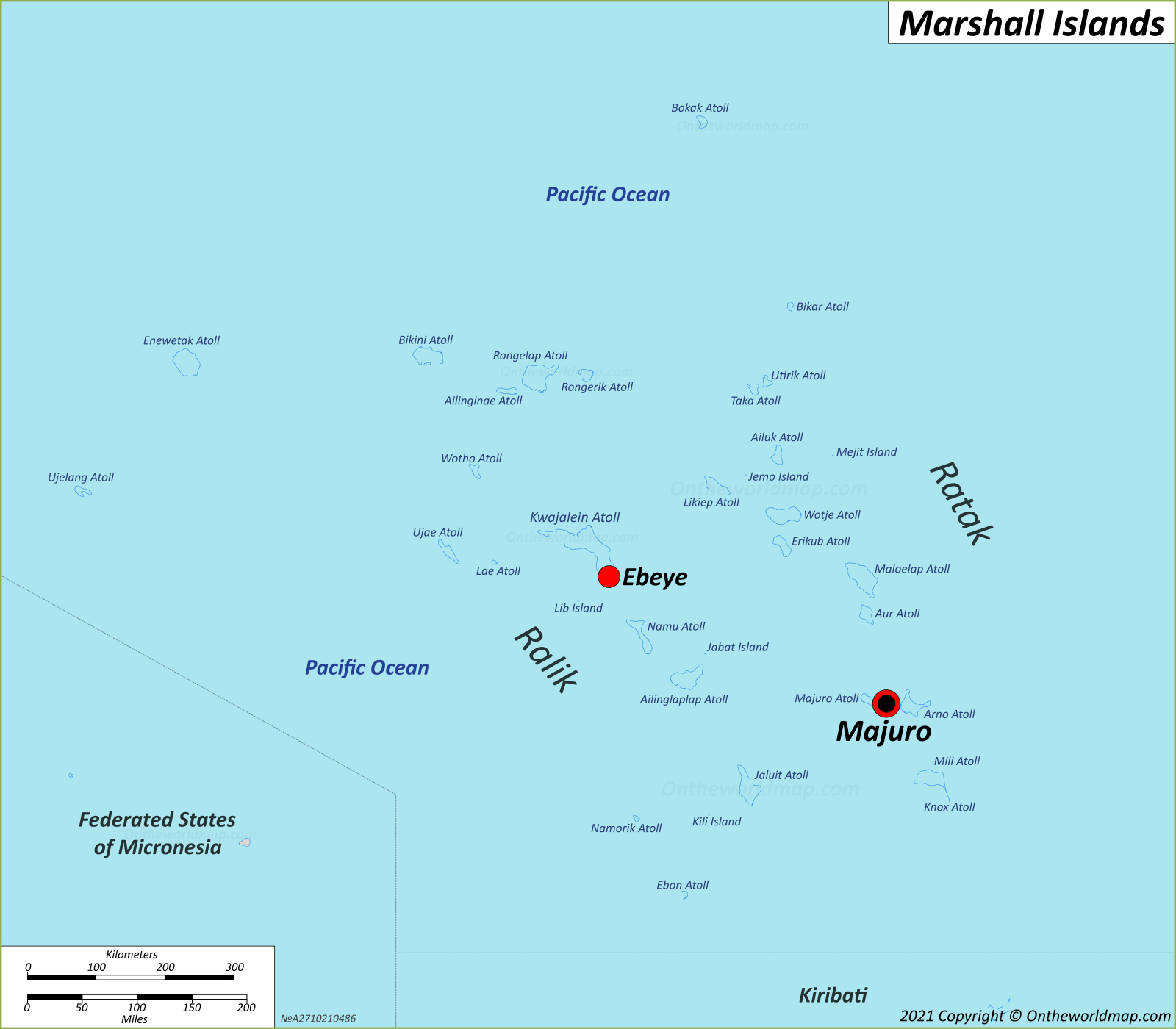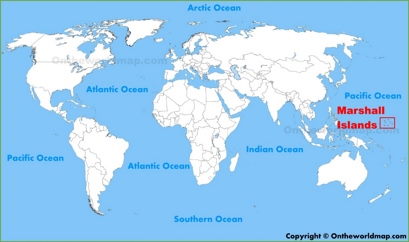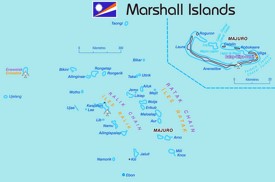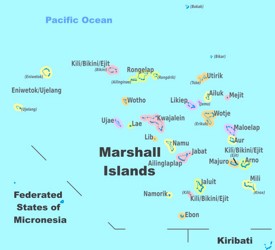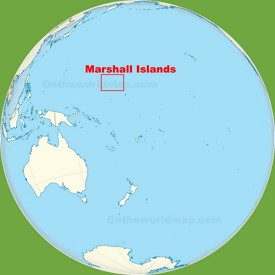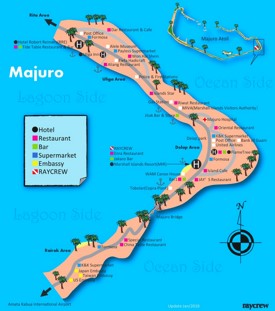Marshall Islands Map
Description:
This map shows governmental boundaries of countries, attols, national capital, major cities and towns on Marshall Islands.
Size: 1600x1400px / 306 Kb
Author: Ontheworldmap.com
You may download, print or use the above map for educational, personal and non-commercial purposes. Attribution is required. For any website, blog, scientific research or e-book, you must place a hyperlink (to this page) with an attribution next to the image used.
Online Map of Marshall Islands
Detailed Maps of Marshall Islands
About Marshall Islands
The Marshall Islands is an island nation in the central Pacific Ocean, consisting of 29 atolls and five isolated islands covering about 70 square miles (181 square kilometers). The country lies between Hawaii and Australia, with no direct borders. The population is about 42,000, living primarily on the atolls of Majuro and Kwajalein.
Majuro, the capital and largest city, serves as the administrative and economic center where government offices and major infrastructure are located. Kwajalein, known for its military importance, is home to a U.S. missile site, which contributes to the local economy.
The economy of the Marshall Islands relies heavily on United States aid, as well as fishing, agriculture, and military leases. The country also benefits from the Compact of Free Association with the United States, which provides financial aid and economic opportunities.
Among the challenges facing the Marshall Islands are climate change and rising sea levels, which threaten low-lying atolls. Efforts to address these challenges focus on sustainable development and international cooperation. Despite these challenges, the Marshall Islands continues to focus on its unique position in the Pacific.
The Facts:
| Capital: | Majuro |
| Area: | 70 sq mi (181 sq km) |
| Population: | ~ 42,500 |
| Official language: | Marshallese, English |
| Currency: | United States dollar (USD) |
| Driving side: | right |
| Calling code: | +692 |
| Internet TLD: | .mh |
| Time zone: | UTC+12 (MHT) |
| Gross domestic product 2019 (PPP): |
|
| Gross domestic product 2019 (nominal): |
|
Largest cities: Majuro, Ajeltake, Delap-Uliga-Djarrit, Ebeye, Laura, Rairok.
Chains of Marshall Islands: Ralik, Ratak.
Atolls of Marshall Islands: Ailinginae Atoll, Ailinglaplap Atoll, Bikini Atoll, Ebon Atoll, Enewetak Atoll, Jabat Island, Jaluit Atoll, Kili Island, Kwajalein Atoll, Lae Atoll, Lib Island, Namdrik Atoll, Namu Atoll, Rongdrik Atoll, Rongelap Atoll, Ujae Atoll, Ujelang Atoll, Wotho Atoll, Ailuk Atoll, Arno Atoll, Aur Atoll, Bikar Atoll, Bokak Atoll, Erikub Atoll, Jemo Island, Knox Atoll, Likiep Atoll, Majuro Atoll, Maloelap Atoll, Mejit Island, Mili Atoll, Taka Atoll, Utirik Atoll, Wotje Atoll.
Geography of Marshall Islands
The Marshall Islands, located in the central Pacific Ocean, consist of 29 atolls and five isolated islands spread over an area of about 750,000 square miles (1.9 million square kilometers). The atolls form two parallel chains, Ratak (Sunrise) and Ralik (Sunset). The islands have a tropical climate characterized by high temperatures, averaging 81°F (27°C) year-round, with a wet season from May to November.
The low-lying atolls, rarely more than 10 feet (3 m) above sea level, are at significant risk from sea-level rise and climate change. The islands' ecosystems include coral reefs and lagoons that support marine biodiversity and traditional livelihoods.
Brief History of Marshall Islands
The history of the Marshall Islands reflects a succession of foreign influences and strategic importance in the Pacific. Micronesian navigators first settled the islands about 2,000 years ago. European contact began in the 16th century, when the islands were successively controlled by Spanish, German, and Japanese administrations. During World War II, the United States seized the islands from Japan and then administered them as part of the Trust Territory of the Pacific Islands.
In 1986, the Marshall Islands gained independence and entered into a Compact of Free Association with the United States. This agreement provides financial aid and defense guarantees, allowing the U.S. to maintain military installations in the region.
Last Updated: October 03, 2024

